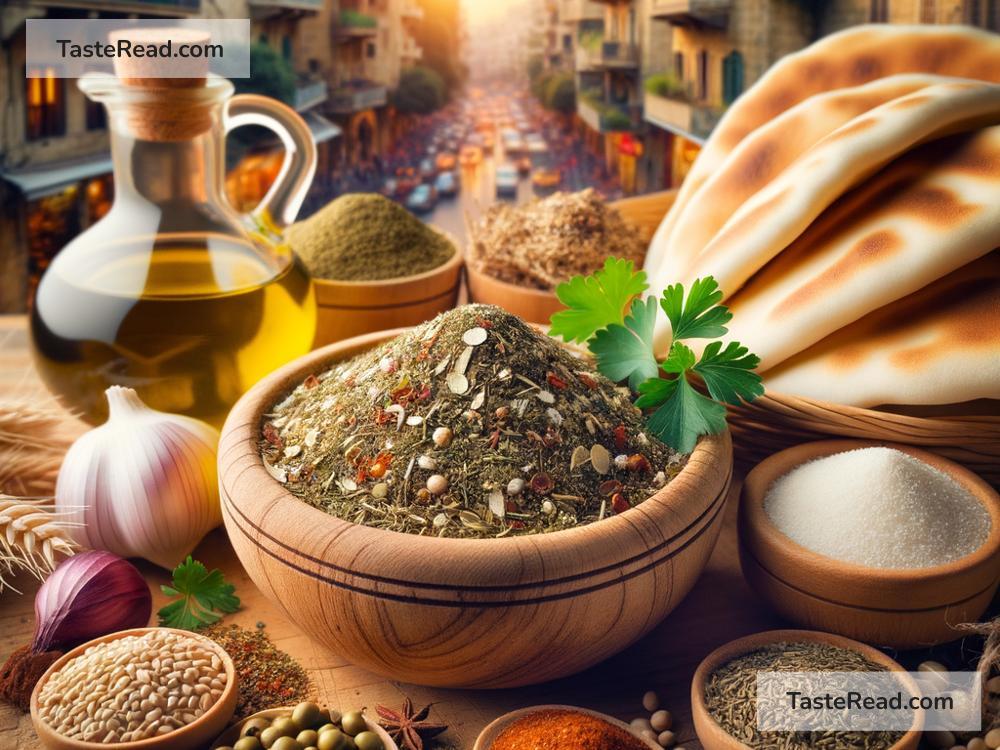Exploring the Bold Aromas of Lebanese Za’atar Blends in Beirut, Lebanon
If you’ve ever heard about Lebanese cuisine, you’ve probably come across the word “za’atar.” It’s a mix of spices, herbs, and flavors that represent the heart and soul of traditional Lebanese cooking. Za’atar is beloved for its bold, earthy taste and its versatility in dishes, from bread to salads and even grilled meat. For anyone visiting Beirut, Lebanon, exploring the flavors of za’atar is a must. Let’s take a closer look at what makes za’atar so special and how it adds magic to Lebanese cuisine.
What Is Za’atar?
Za’atar is both the name of a spice mix and a type of herb native to the Middle East. The spice blend usually contains a combination of dried thyme, oregano, marjoram, sesame seeds, sumac, and sometimes salt. Some recipes even have a secret ingredient depending on the family or region it comes from. That’s what makes za’atar so unique—every household and shop may have its own distinct spin on the mix.
Sumac, a reddish spice with a tangy taste, plays a starring role in za’atar blends. It gives the mixture a zesty punch and its signature reddish-brown color. Sesame seeds add texture and nutty richness, while dried herbs contribute earthy and aromatic tones. Together, these ingredients create a balance of tangy, salty, and savory flavors.
Why Za’atar Matters in Lebanese Cuisine
Za’atar isn’t just a spice mix—it’s an important part of Lebanese culture and history. In Lebanon, food is more than nourishment; it’s a source of pride, tradition, and togetherness. Za’atar has been used for centuries and is deeply tied to family recipes and local traditions. It’s enjoyed at breakfast, lunch, dinner, and in snacks throughout the day.
The most famous way to enjoy za’atar is on manakish, a type of flatbread that’s baked with a generous spread of za’atar mixed with olive oil. Manakish is a breakfast staple, and you’ll find it in bakeries all over Beirut. The warm bread and fragrant topping make it a comforting and flavorful start to the day.
Za’atar is also sprinkled over fresh vegetables, swirled into dips like labneh (strained yogurt), and used to season meats or roasted vegetables. It can even be baked into pies or mixed into dough for a fragrant twist. No matter how it’s used, za’atar adds a signature Lebanese touch.
Exploring Za’atar in Beirut
Beirut, the vibrant capital of Lebanon, is a great place to explore za’atar in all its forms. From bustling bakeries to traditional spice shops, this city offers endless opportunities to savor the iconic flavor of za’atar. Here are some ways to experience it:
1. Visit Local Bakeries for Manakish
Start your morning with manakish topped with za’atar. Many bakeries in Beirut prepare their za’atar mixes fresh daily, so you’ll get to taste the best blends. Grab a warm piece of manakish and pair it with a cup of tea or strong Lebanese coffee—it’s a simple yet unforgettable treat.
2. Shop for Za’atar at Spice Markets
If you want to take some za’atar home, Beirut’s spice markets are the place to go. Local spice vendors often craft homemade blends, and you can smell and sample different varieties before buying. Some blends are mild and tangy, while others are stronger and packed with flavor. You might even learn the stories or traditions tied to specific blends!
3. Try Za’atar in Creative Dishes
While za’atar traditionally shines in certain dishes, chefs in Beirut are modernizing how it’s used. Trendy cafes and restaurants are experimenting with za’atar pizzas, za’atar-infused dips, and even za’atar desserts. Be adventurous and try something new—you might discover an unexpected favorite.
4. Learn to Make Your Own Za’atar Blend
If you’re really curious, some cooking classes in Beirut teach you how to make za’atar from scratch. You’ll get hands-on experience mixing the herbs and spices together, and you’ll leave with your own personal blend. It’s a fun activity, and you can share the joy of za’atar with family and friends back home.
Why You’ll Fall in Love with Za’atar
Za’atar isn’t just delicious; it’s a cultural experience. Each bite tells a story—of proud traditions, aromatic herbs grown under the Mediterranean sun, and meals shared among loved ones. Whether you eat za’atar on bread or take some home from your trip to Beirut, you’ll carry the warmth and essence of Lebanon with you.
A Taste to Remember
Exploring Lebanese za’atar blends in Beirut is an adventure for your senses. From the way it smells to the way it tastes, za’atar gives you a window into Lebanese life and hospitality. So if you ever find yourself wandering the streets of Beirut, don’t forget to follow the scent of baked bread and spices. It may lead you to your next flavorful discovery—and perhaps a new favorite food ritual.
Whether you’re a seasoned foodie or just curious about the world of spices, za’atar is something everyone should try. Let the bold aromas and rich taste transport you into the heart of Lebanese culture.

